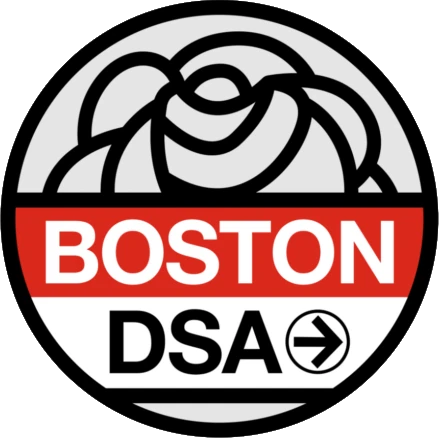

Kickstarter Workers Rally in Boston to Launch Fourth Strike Week
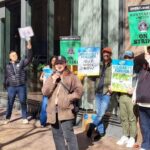
[[{“value”:”

By: Frederick Reiber
Boston, MA – Kickstarter Union (OPEIU Local 153) workers rallied on Thursday outside the 100 Oliver Street offices of Littler Mendelson, America’s largest union-busting firm, to launch their fourth week on strike. Employees from across the country, from Boston to New York City to Seattle, gathered to protest management’s choice to retain Littler Mendelson and press for an “honest, come to the table” negotiation.
Throughout the hour-long rally, workers from across the company spoke on the importance of the strike with reasons ranging from “all workers deserve a living wage” to their children’s futures.
The Kickstarter Union have been on strike since October 2 to defend their 4-day, 32-hour workweek (4DWW) and raise the compensation for the lowest-paid employees of the company. On September 26, 85% of workers voted to authorize the strike after management continued to “block real progress” since bargaining for Kickstarter’s second contract began in April 2025.
A Wall to Wall Union
Consistent in workers’ speeches at the rally targeting Littler Mendelson was the importance of a wall-to-wall union.
A wall-to-wall is a union that includes all workers at a given shop-floor. Unlike other unions, all workers, regardless of role, are covered by Kickstarter United, with bargaining not centered around a specific trade.
As one Kickstarter worker, Dannel Jurado, stated:
It was [our] intention from the very get-go for our union to be a wall to wall union… part of what our contract fight here is about is us recognizing we value your work a lot more.
Another rank-and-file worker argued that the strike wasn’t just about those with the large engineer salaries, but also for the workers who “make the platform run… the outreach, customer support, and trust and safety teams.”
Tech platforms and companies often rely heavily on hidden workers, those who manage and moderate the platforms. These jobs, despite being under some of the wealthiest companies in the world, often come with horrible working conditions and third-party independent contracts. Workers are required to filter through violent and explicit material at incredibly fast speeds, while receiving low pay and little mental health assistance.
One of Kickstarter United’s main demands is to secure a livable wage for these frontline workers. Estimates from the union put the cost of doing so at less than $100,000 per year, something the company can almost certainly afford given the high cost of anti-union lawyers.
Tech Organizing in the United States
This is the second American tech strike, following the New York Times Tech Guild strike in late 2024. The NYTimes strike and Kickstarter’s choice to unionize represent current shifts within American tech. What was once an industry dominated by high-paying jobs and good working conditions has seen continuous backslide as billionaires continue to squeeze workforces for more, with increasingly undesirable work conditions.
Organizing so early in tech means that much of the playbook is still being written. As Jurado put it:
It’s scary, […] it’s a lot of unknown stuff, but at the same time, I think it’s important. We wouldn’t be doing this work, we wouldn’t be out here at this rally if we didn’t think it was important.
One of the significant challenges is figuring out how to organize and strike digitally. Kickstarter is a fully remote workforce, meaning workers do not have an office, instead working from home.
Increasingly, tech workers are finding ways to overcome this barrier.
To some extent, Kickstarter Union workers are not new. It’s been fivr years since Kickstarter buried its fluffy reputation as a startup “public benefit corporation” prioritizing creativity over profits under petty managerial tyranny and vicious union-busting. Littler Mendelson is only the top of the iceberg; in 2019, when workers organized the shop intially, general counsel yelled at rank-and-file workers and then punished them for using company-provided feedback channels. Workers were brought into hostile meetings disguised as feedback meetings during the union “incident.” Workers started Googling how to start a union after discussing their shared fury through digital channels.
As recorded in the Engelberg Center at NYU Law’s Kickstarter Union Oral History Project, during the 2019 campaign for the Kickstarter Union,
This idea of worker feedback as a kind of punishable insubordination would come up again and again as a key tactic in management’s anti-union strategy.
The 2025 fight by the Kickstarter Union shows this has not changed.
Remote work may be a perk of the job, but it also means that the process of winning power in the workplace through the strike looks fundamentally different.
Kickstarter workers run digital community events that build the union’s bonds. For example, Kickstarter workers have recruited individuals to sign creator petitions and encouraged them to put pressure on management at events. Workers have also brought in pro-labor academic, political, and journalistic leaders to speak, including Eric Blanc, Brad Lander, and Kat Abughazaleh, to maintain momentum and deepen solidarity as organizers build the campaign.
Other approaches to remote union-building include workers using more recreational venues such as live streaming on Twitch, running Dungeons and Dragons with Kickstarter creators, and, finally, in-person pressure rallies where workers meet for actions in places like Boston.
Reflecting on Organizing and Community
The October 24 rally may have been targeted, but it also embodies the growing desire and need for unions and community across the board. As the workers at Kickstarter were quick to point out, resisting oppressive work conditions doesn’t happen when we withdraw – it happens when we talk to each other. Jurado stressed:
We need to be more in community with our coworkers, with our own communities, with our neighborhoods.
What the Kickstarter workers made clear is that community is not a side effect of unionization; it’s the goal. In a moment defined by alienation, surveillance, and political fear, the simple act of standing together is itself an act of resistance. That’s what organizing looks like: not grand gestures, but everyday commitments to one another.
Readers can tell management to meet the Kickstarter Union’s demands here.
Readers can also donate to the union’s solidarity fund here.
Frederick Reiber is a PhD student at Boston University researching collective action and technology. He is a member of SEIU 509, Boston DSA, and covers tech, labor, and education for Working Mass.
The post Kickstarter Workers Rally in Boston to Launch Fourth Strike Week appeared first on Working Mass.
“}]]


Bonus Conversation with Kelly Latimore
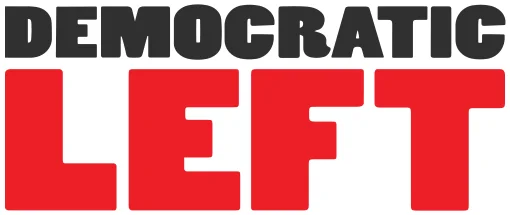

Thinking of Going to DSA National Convention? Here’s Why You Should Consider It!
Reflections from a first-time delegate to DSA National Convention.
The post Thinking of Going to DSA National Convention? Here’s Why You Should Consider It! appeared first on Democratic Left.
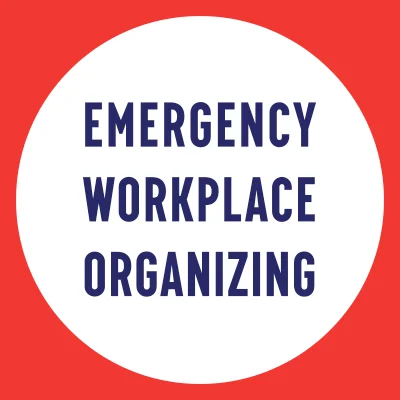

The Power of the Strike
Dock workers in Italy threatened to “block everything” if the Global Sumud Flotilla, the biggest effort from organized labor to end the genocide in Gaza.
The post The Power of the Strike appeared first on EWOC.


OPINION: UAW 2320 Legal Workers Elect National Slate of DSA Leaders and Allies to Lead the Union

[[{“value”:”

NOLSW Forward Leads Union to Declare Support for BDS and Opposition to U.S. Imperialism
By: Siobhan M.
The views expressed in this article are the author’s own and do not represent the official position of Working Mass.
BOSTON, MA – The National Organization of Legal Services Workers (NOLSW, UAW 2320) emerged from our 2025 National Joint Council (NJC) and National Executive Board (NEB) elections energized to fight for the rights of our members, as well as for the working-class and oppressed people across the world. The NOLSW Forward slate swept the union’s 13-member NEB, including seven DSA members, with a vision rooted in social, economic, and racial justice. The slate—elected as the new NEB by acclamation after our strong NJC showing—aims to transform NOLSW into a militant organization capable of challenging capitalism, imperialism, and state repression.
The NJC is our 7,000-member union’s highest delegated body and included over 120 delegates from across the country.
The core programming of the NJC spanned three days. On Monday, July 21, delegates participated in workshops on topics like labor history, sectoral bargaining, and solidarity with Palestine. On Tuesday, the delegation traveled to the Capitol to advocate for healthcare and homes for all before, on Wednesday, holding our business meeting to deliberate and chart our course for the coming year. Delegates voted overwhelmingly to adopt plans to build sectoral bargaining campaigns in several cities, support immigrants, transgender people, and Palestinians, and amend bylaws to improve our internal democracy and transparency, among other decisions.
Much of the initiative behind these resolutions came from the NOLSW Forward slate.
Affirming Our Solidarity
As the UAW’s only nationally-amalgamated local, NOLSW has over 150 bargaining units spread out across dozens of states. Practically, this makes it difficult for our members to meet and organize with each other across units. By UAW’s rules, each of our units also has autonomy to decide their own contracts. However, our union is taking steps to amplify our power, recognizing that the working class is strongest when it is united.
Taking inspiration from the NYC-based Association of Legal Aid Attorneys (ALAA, UAW 2325), NJC delegates voted to create a Sectoral Bargaining Committee tasked with coordinating bargaining campaigns in 2028 and beyond. This past summer, 2,000 ALAA workers from 11 shops who had aligned their contract expirations all went on strike with some common goals, including a $70,000 wage floor for all workers. Legal aid workers make the U.S. legal system run, so this collective strike was immensely disruptive. Each unit negotiated with their own management, and each made their own contract decisions, so strike lengths varied—Bronx Defenders Union reached a tentative agreement almost immediately while other units were striking for weeks. The resulting contracts did not meet all of workers’ demands, but they featured some significant wins, including wages of at least $70,000 per year for all workers at the Office of the Appellate Defender.
NOLSW wants to learn from and build on ALAA’s 2025 campaign. While focused on areas where we have density—including Massachusetts, New York, Chicago, Texas, and the Bay Area—we’re committed to “do everything in [our] power to assist and support any shop that chooses to participate in sectoral bargaining.” One element of these contract fights will be protecting our transgender and nonbinary members from the Trump administration’s attacks on our healthcare and public existence. Per another 2025 NJC resolution, our members will be equipped with model contract language to fight for gender-affirming care and workplace nondiscrimination protections,
Our solidarity doesn’t stop with our union siblings. As legal aid and human services workers who spend our lives helping some of U.S. society’s most vulnerable people, NOLSW members understand the need to merge our workplace struggles with those of working and oppressed people in our neighborhoods and around the world. Our members are among those on the front lines against the Trump administration’s deportations, both in immigration courtrooms and on the streets. Our NJC delegates voted to become a Sanctuary Local, with commitments like a refusal to cooperate with federal agents, “Know Your Rights” trainings for immigrants and protestors, legal observation and mutual aid for those targeted by police, and political advocacy for pro-immigrant policies at all levels of government.
Delegates also reaffirmed our solidarity with the Palestinian people and opposed U.S. military intervention across the world. Building on 2024’s Resolution for the Liberation of Palestine, the 2025 iteration urged units to divest their retirement plans, endorsed the Mask Off Maersk campaign against arms shipments, and pledged to defend members facing discipline for standing with Palestine. It also demanded “the U.S. government immediately stop engaging in and supporting foreign wars and otherwise taking and supporting military actions abroad” and called on the UAW, AFL-CIO, and all other bodies to which we send delegates to refuse support to any politician out of step with these values. This gives our representatives on these bodies a mandate from membership to stand with Palestine.
Democratizing National Leadership
NOLSW Forward’s goals also included some internal reforms to improve union democracy and transparency. We passed bylaw amendments to have more frequent national meetings and improve a system of collective leadership among the NEB. We will invite our members in to organize with us, proactively sharing Zoom links and notes for NEB meetings with membership. Our union knows we’re strongest when we are united, and we hope to build a working-class movement for peace, justice, and liberation across the world.
Siobhan M. is a Trustee on the NOLSW National Executive Board, elected by acclamation as part of the NOLSW Forward slate. The views expressed herein are her own.

The post OPINION: UAW 2320 Legal Workers Elect National Slate of DSA Leaders and Allies to Lead the Union appeared first on Working Mass.
“}]]


Keep DSA Together
DSA’s big tent makes it unique on the U.S. Left. Protecting it will help us weather and even grow during the second Trump administration.
The post Keep DSA Together appeared first on Democratic Left.


Boston DSA 2025 Voter Guide
Boston DSA has finalized our Voter Guide for the 2025 general elections in Boston, Somerville, and Cambridge! The guide can be found at this link.
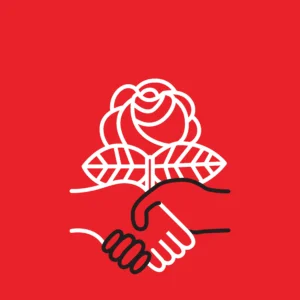

From the National Political Committee — Fighting For Working Class Freedom
Enjoy your October National Political Committee (NPC) newsletter! Our NPC is an elected 27-person body (including both YDSA Co-Chairs) which functions as the board of directors of DSA. This month, join our Fall Drive, hear about organizing across the country, and more!
And to make sure you get our newsletters in your inbox, sign up here! Each one features action alerts, upcoming events, political education, and more.
- From the National Political Committee — Fighting For Working Class Freedom
- Socialist Cash Takes Out Capitalist Trash. Help Elect Socialist Candidates!
- Saturday 10/25 Fall Drive Phonebank Kick Off — Special Guest Bhaskar Sunkara
- RSVP for International Migrant Rights Working Group ICE Watch Training Tuesday 10/28
- AfroSocialist and Socialists of Color Collective Meetings Tuesday 10/21 and Thursday 11/13
- Convention results
- Apply to Join the Democracy Commission (DemCom) 2025–2027! Deadline Extended to Friday 10/31
From the National Political Committee — Fighting For Working Class Freedom
Hot Socialist Summer has come to a close for 2025, but as the temperature drops this fall, organizing across DSA is heating up!
DSA is at a pivotal moment, where the genocide in Palestine and the failures of the Democratic Party to mount meaningful opposition to the Trump administration, the oligarchy, and the rise of the far-right is motivating tens of thousands of people to build a mass, socialist organization in the United States. According to a Gallup poll, support for socialism is at an all-time high among Democratic voters. DSA’s presence at mass actions like the No Kings protests last weekend show how many people are ready for a fighting alternative to the catastrophic status quo.
All across the country, people are being inspired to believe that building a powerful socialist party is possible — and that they can be a part of it. Just this past month, DSA has surpassed 80,000 members in good standing, our highest membership peak to date! DSA now has better organization, more political development, more vibrant internal democracy, and more radical ambitions coming to fruition than ever. We have more DSA members contesting elected office while operating together as socialist blocs, from Missoula, Montana, to Minneapolis, Minnesota, to Portland, Oregon. We are more embedded in the labor movement, we are more functionally part of social movements, we are more deeply internationalist — and thus are even better positioned to motivate and sustain a new membership surge.
We are just weeks away from Zohran Mamdani’s election for mayor of New York City — a democratic socialist mayor in the highest executive office in the heart of global capital! — and chapters across the country are throwing down for their locally and nationally-endorsed campaigns as Election Day nears (and you can, too, even if you’re not in a city with a candidate – jump on a Socialist Cash Takes Out Capitalist Trash phonebank and help push these candidates across the finish line)!
State power is just one piece of DSA’s strategy — we’re also…
- Building out our support network for Starbucks Workers United and helping chapters across the country to connect with their local SBWU organizing units as the holiday rush draws near
- Showing up in solidarity with the Cuban people, with a delegation we just sent to Havana of 40 DSA elected leaders and rank-and-file members from chapters big and small across the country to deliver hundreds of pounds of solidarity aid, learn about the achievements and challenges of Cuban socialism.
- Ramping up the pressure on Avelo Airlines as they continue to profit off mass deportations via ICE contracts, both with a consumer boycott and with pressure campaigns to kick them out of airports
- Continuing to build out resources and new fronts in our boycott against Chevron, a primary BDS target, as we continue to stand firm for Palestinian liberation
- And so much more!
As we continue the fight for working class freedom everywhere — from down the block to the other side of the globe — we know that as DSA, we must be bigger and stronger by many orders of magnitude. DSA is and will always be a dues-funded organization, where organizing new members increases our people power, allowing us to deepen and expand our base as we fight to oppose US military aggression and free Palestine, prepare for major political interventions toward midterms, organize toward May Day 2028, and so much more. DSA now has more members in good standing than ever before — and we’re turning the heat up higher with our just-launched Fall Recruitment Drive, with a stretch goal of reaching 100,000 DSA members by the end of this year!
We’re rooted in struggle, blooming in solidarity — and together we’ll keep growing democratic socialism throughout this fall. Read on for more about how you can plug into the Fall Drive — and sign up for phonebanks with special guests, to help us reconnect with lapsed members to rejoin DSA in this crucial political moment! Watch this space for more information about how you can get involved at the chapter level, or by taking on your own recruitment campaigns among your coworkers, neighbors, and friends.
For even more ways to get plugged into DSA, scroll down! We will see you in the fight!
Yours,
Megan Romer and Ashik Siddique
DSA National Co-Chairs
Socialist Cash Takes Out Capitalist Trash. Help Elect Socialist Candidates!
It’s 3 weeks till election day  and we’re 6.5k short of our goal! It’s been a hugely successful year for the DSA’s National Electoral Commission and our fundraising campaign, and we’re hoping to have a new crop of socialists in office to show for it.
and we’re 6.5k short of our goal! It’s been a hugely successful year for the DSA’s National Electoral Commission and our fundraising campaign, and we’re hoping to have a new crop of socialists in office to show for it.
But taking out the capitalist trash won’t be possible without YOUR help. Corporate money is flooding into our races across the country in this crucial final stretch. We’ve set a goal of raising $100,000 before election day to ensure our slate has the support it needs to win and we’re just a little over $5,000 short! Can you donate to our slate to support a socialist running for office?
Saturday 10/25 Fall Drive Phonebank Kick Off — Special Guest Bhaskar Sunkara
Be part of the Growth and Development Committee’s nation-wide membership drive! Our strength is rooted in solidarity and in our communities. Let’s work to build deep roots in our local communities, reach out to lapsed members to renew, and bring thousands more into the struggle together! Join us for Fall Drive phonebanks to talk with lapsed DSA members about renewing their dues. We’ll kick off Saturday 10/25 at 5pm ET/4pm CT/3pm MT/2pm PT with special guest Bhaskar Sunkara!
And you can join calls throughout November:
- Saturday 11/1 at 5pm ET/4pm CT/3pm MT/2pm PT
- Wednesday 11/5 7pm ET/6pm CT/5pm MT/4pm PT with special guest Meagan Day
- Wednesday 11/12 7pm ET/6pm CT/5pm MT/4pm PT
- Saturday 11/15 5pm ET/4pm CT/3pm MT/2pm PT
- Wednesday 11/19 7pm ET/6pm CT/5pm MT/4pm PT with special guest Adam Hochschild
- Saturday 11/22 5pm ET/4pm CT/3pm MT/2pm PT
RSVP for International Migrant Rights Working Group ICE Watch Training Tuesday 10/28
ICE agents have been escalating their presence in our communities, and that means that we need to get together with our neighbors and come up with plans to make sure we are protecting ourselves and our communities from their harassment.
People all over the country are trying different things. Many communities are coming up with ways to observe ICE and to inform neighbors of their rights, all things that every person has a right to do under the Constitution.
Join DSA’s International Migrant Rights Working Group and NDLON on Tuesday 10/28 at 8pm ET/7pm CT/6pm MT/5pm PT to hear from NDLON organizers about the Adopt a Corner program, and from DSA organizers who are actively running ICEWatch and Adopt a Corner programs in their local chapters.
AfroSocialist and Socialists of Color Collective Meetings Tuesday 10/21, Thursday 11/13
Hello comrades and cousins! Interested in joining a collective for AfroSocialists and Socialists of Color?
Join AfroSoC for for upcoming General Body Meeting (GBM) to be in community with socialists of similar identity, culture and politics. The next GBM will be Thursday 11/13 at 7pm ET/6pm CT/5pm MT/4pm PT.
If you are new to AfroSoC, we encourage you to attend our upcoming New Member Orientation tonight, Tuesday 10/21 at 7pm ET/6pm CT/5pm MT/4pm PT. Questions? Reach out to AfroSoc@dsacommittees.org.
Convention results
The 2025 Convention Results Compendium and Minutes are officially approved by the 2025-2027 National Political Committee (NPC)! You can view these results and minutes here.
We appreciate everyone’s patience as our new NPC got onboarded and settled into their roles. As a reminder, there are Overflow Agenda items from the Convention that the NPC is still working through. These can be viewed in the final compendium. We hope to take up a majority of these items during our October 19th virtual meeting as well as our November 8th and 9th NPC in-person meeting in Denver, Colorado.
We hope that all comrades who got sick following Convention are doing well. If you think you may have contracted COVID and have not already let us know, please email dsacon@dsausa.org with the subject line “Convention COVID Reporting” so we can continue to track and plan for future events. Please do not reply back to this email for this purpose.
Apply to Join the Democracy Commission (DemCom) 2025–2027! Deadline Extended to Friday 10/31
Apply to Join the Democracy Commission (DemCom) 2025–2027! The deadline to apply is Friday 10/31. Authorized in 2023, the Democracy Commission (DemCom) developed reforms to strengthen democracy across DSA. Its proposals were overwhelmingly adopted at the 2025 Convention, and the body has now been reauthorized to support chapters and the NPC in implementing them.
DemCom will assist with chapter rechartering and bylaws review (2025–2027), visit chapter meetings to support implementation, report regularly to members and the NPC, develop best practices in tandem with chapters, and promote democratic governance.
There are open seats on the Commission. Please fill out the form here to apply. The application deadline is Friday 10/31. Commissioners are expected to attend regular meetings (8PM ET, Monday evenings, plus some weekends), work with chapters to implement reforms, and report on progress and challenges.
The post From the National Political Committee — Fighting For Working Class Freedom appeared first on Democratic Socialists of America (DSA).


When the boss says “Unions are great, but not for us”
Ask yourself: What’s so different about your workplace? Why would your boss push back on a union?
The post When the boss says “Unions are great, but not for us” appeared first on EWOC.


DSA Finances Demystified
A budget presentation at the organization's national convention in August clarifies the budget for members.
The post DSA Finances Demystified appeared first on Democratic Left.